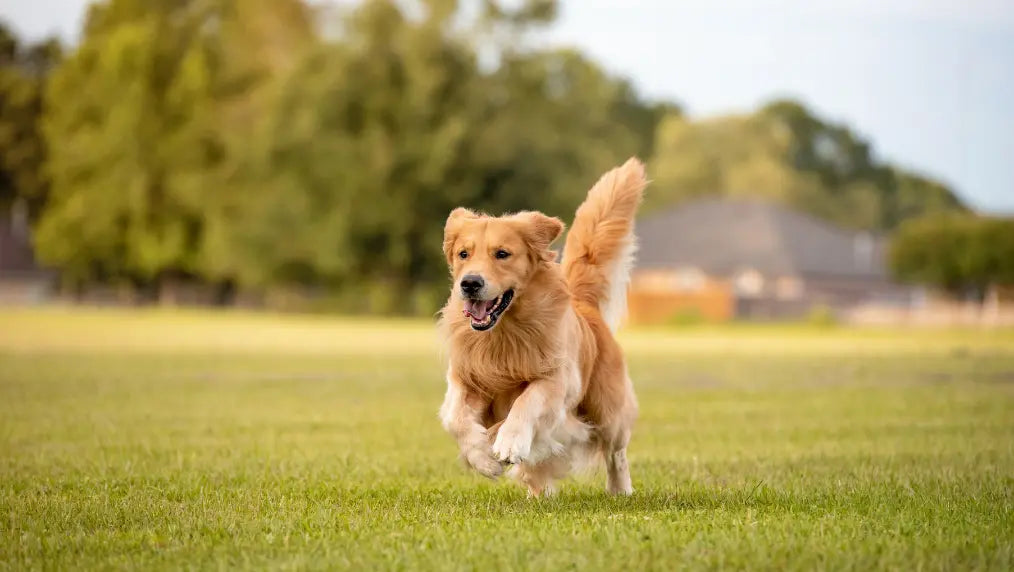Dog training is an essential part of owning a canine companion. While most dogs are intelligent and eager to please, some breeds possess unique traits and characteristics that make training a bit more challenging. But are there really breeds that are the hardest dogs to train?
In this blog post, we will explore 10 dog breeds that may require a little extra patience and persistence during the training process. By understanding these dog breeds and their specific challenges, we can employ effective training strategies to bring out the best in these wonderful breeds.
Afghan Hound:

Known for their independent nature and aloof demeanor, Afghan Hounds can be a bit stubborn when it comes to training. Their strong hunting instincts and sensitivity to harsh handling require dedicated training and a gentle, reinforcement-based approach. Consistency and building a strong bond with your Afghan Hound will be key to a successful properly trained dog.
Basenji:

Other dogs, like Basenjis, are intelligent and curious dogs, but they possess a strong sense of independence. This independent streak, combined with their natural trait of being a stubborn dog, can make training a challenge. Patience, reinforcement, and engaging their active minds with stimulating activities will yield the best results.
Chow Chow:

Chow Chows have a reputation for being strong-willed and aloof. They can be wary of strangers and may require extensive socialization. Training a Chow Chow requires firmness, consistency, and reinforcement. Early socialization and obedience training are crucial for this breed.
Dalmatian:

Dalmatians are energetic and intelligent dogs, but they can also be headstrong and stubborn. They require consistent training, early socialization, and plenty of physical exercise. Positive reinforcement, combined with mental stimulation, will help keep them focused and engaged.
Great Pyrenees:

Great Pyrenees are gentle giants with a strong instinct to protect and guard. They can be independent thinkers and may exhibit stubborn and aggressive behavior. Early socialization, firm but dedicated training methods, and plenty of mental stimulation are necessary to channel their intelligence and loyalty effectively.
Basset Hound:

The Basset Hound has a bad reputation sometimes for being a stubborn dog who is easily distracted by their keen sense of smell. Basset Hounds are fairly intelligent dogs, but they are not the easiest to train. Start training right off with puppies and do plenty of positive training to keep them interested. They enjoy tracking and hunting, even if only as a casual pastime. They may require additional motivation during training such as high-value treats or toys. Consistency, patience, and a structured training routine will help them stay focused and motivated. They can be trained properly.
Shiba Inu:

Shiba Inus are known for their strong-willed nature and independent thinking. They are intelligent dogs but can be aloof and stubborn. Training should be approached with reinforcement, consistency, and firmness. Early socialization and mental stimulation are essential for this active breed however.
Siberian Husky:

Siberian Huskies are highly intelligent and energetic dogs with a strong instinct for independence. They are working dogs. Their natural inclination to roam and their high prey drive can make training a challenge. Establishing a firm leadership role, using reinforcement, and providing regular exercise will help channel their energy effectively and make your furry friend ace those training sessions.
Bull Terrier:

Not to be confused with the American Pit Bull Terrier, Bull Terriers are robust, big-boned terriers who move with a jaunty stride suggesting agility and power. The breed's hallmark is a long, egg-shaped head with erect and pointed ears, and small, triangular eyes that glisten with good humor. They can be one of the hardest dogs to train.
Bull Terriers are known for their strong personalities and determination. They can be stubborn and willful, requiring firm and consistent training. Positive reinforcement methods, such as using rewards and praise, are crucial. Early socialization and obedience training are essential to mold their behavior positively.
Jack Russell Terrier:

Jack Russell Terriers are lively, intelligent, and highly energetic dogs. They possess a strong prey drive and may exhibit stubborn tendencies. Consistent, patient training methods that utilize reinforcement and mental stimulation are essential. Regular exercise and engaging activities will help keep them focused and prevent destructive behavior.
“Easy” to Train Dogs
Perhaps people get so focused on breeds because there is such a prevalence of lists that identify traits by breed. There are lists online showing which breeds are the calmest, the most protective, and the ones who bark the most. There are other lists that show dogs who are a high energy breed, a dominant breed, or a challenging show dog breed. Plus there are many that list the breeds that are easier to train than others.
Animal Planet's list for easy to train dogs includes Australian Cattle Dog, Australian Shepherd, Border Collie, Corgi, Doberman Pinscher, German Shepherd, Golden Retriever, and Labrador Retriever. Pet 360 lists the following breeds: Bernese Mountain Dog, Border Collie, Havanese, Shetland Sheepdog, Brussels Griffon, German Shepherd, Standard Poodle, and Norwich Terrier, among others.
As you can see, there is some overlap on these two lists (which are just two of many) as well as some differences. Most of these lists will have Border Collies, German Shepherds, Doberman Pinschers, Australian Shepherds, and Australian Cattle Dogs as these dogs tend to pay attention to their owner and are willing to comply with their owner's requests.
If you're thinking about acquiring a dog from a particular breed and are concerned about trainability, look at the breed's present and ancestral occupation as that will give you an indication as to whether the breed was designed to work for people or to think independently. A dog originally bred more to work independently, such as a livestock guardian dog like a Great Pyrenees, will not be as immediately compliant as a dog bred to take direction from people, like a Doberman Pinscher.
Age Can Make a Difference
A dog's age during their training can make a huge difference as to how easy the training will be. When a 10- to 12-week old puppy is introduced to training, it can be a huge success or a disaster. It all depends on the training regime itself and the owner's expectations. For example, a training program that takes into account the puppy's short attention span will be more successful than one that requires the puppy to be focused for longer than they are capable of doing at their.

Training will be easy with a puppy of any dog breed who is taught according to their abilities, rewarded well for their successes, and helped to succeed as much as possible. Puppies also have concentration problems when they're teething, usually between 4 1/2 and 5 months of age. They are still trainable but a novice owner or wise trainer will ease up on their expectations of the puppy until their mouth feels better.
Adolescence can also make training tougher. Most puppies tend to slide into that “teenage” stage anywhere between 9 and 14 months of age. Although old enough to concentrate and past the teething stage, these puppies are transitioning from puppyhood to adulthood, and just like human teenagers, some will have a harder time than others.
Pet Owners: this doesn't mean teenage dogs shouldn't be trained though. Even if it might be difficult, teenagers need guidance during this time of their lives; just keep in mind the training might not always be easy.
Adult dogs, from early adulthood through old age, are usually easy to train. This is especially true for dogs who were introduced to training early in their lives. If they have learned how to learn, and know the joys of training with their owner, then that will remain through their lifetime.
The Dog Owner Makes the Biggest Difference
The person holding the other end of the leash has the biggest impact as to whether any training program is going to be easy or incredibly difficult. Yes, the dog's breed plays a part, as does their age and overall health, but the person who is asking the dog to do something is the most important part of the partnership. Whether they are experienced owners or not.

To create a successful partnership with your dog and properly train them, learn as much as you can about their breed or mixture of breeds. Breeders are good sources of information in the dog world and many will convey realistic information and not just say, "Oh, this is the best breed in the world!" or "They are the most loyal and loving dogs ever!"
Talk to dog trainers about the breed, too, and ask what works well for most dogs and what doesn't work. Which dogs can be more difficult dogs or the hardest dog breeds to train. Do some reading about other breeds and dogs in general, too, because all dogs have more in common with each other than they have differences. What makes dogs tick? How do they relate to people? What jobs have dogs been trained to perform? Which are the most loyal dogs?
Obviously, since you're reading this blog, you've already got a start on your reading and we'll continue to provide more brain food for you in the future but keep exploring. Especially for first time dog owners.
Different Types of Dog Training
Basic Puppy Training:
This includes efficient teaching of basic and more advanced skills for sit, sit/stay, settle on a mat, walk nicely on a leash, come when called, leave desirable stuff, drop desirable stuff, staying on the floor when excited (no jumping up), learn these skills with distractions.

Positive Reinforcement:
Also known as reward-based training, force-free training, or R+ training, this method commits strictly to this kind of reinforcement, using rewards to guide your dog towards desired behaviors. There are a few reasons this type of training is the most common form used among modern, science-backed dog trainers, even among the hardest dog breeds to train.
This type of reinforcement training typically means using a marker (such as a marker word like “yes” or a clicker) alongside training treats to reinforce good behaviors or actions. However, some dogs are better motivated by a beloved toy or simple affection and praise from their owner. The key is to find what your dog loves and reward them with it for good behavior.
Reinforcement training can be used in all aspects of dog training, from housebreaking to obedience to agility work, making it one of the most versatile approaches.
Behavioral:
Behavioral puppy training allows you to find a path that satisfies both your and the puppy’s needs by providing a clear path forward. You can influence your puppy’s behavior through well-timed, proper reinforcement and clear body language and, in doing so, help your puppy understand the polite behaviors that will reward them. This atmosphere of conflict-free understanding builds a strong foundation for trust and voluntary cooperation.

Clicker:
Clicker training is more of a subset of reinforcement training than its very own training technique, but there’s enough to it that it’s worth digging into on its own. Reinforcement training doesn’t have to be done via clicker – can use a marker word (like “yes” or “good”) to mark the desired behavior. However, a clicker makes this process much easier.
This is due to the fact that a clicker allows trainers to be much more exact and specific about which behavior the dog is being rewarded for. Plus, clickers are a uniform sound. If you have an entire family training a dog with a marker word like “yes”, everyone might use a different tone or intonation, making the marker less effective and not as consistent.
Science-based:
Basically asking – what does the science say? The study of dog cognition and learning is still a relatively new field, and animal behaviorists are learning more about how our four-legged pals learn each and every day through new studies and experiments.

Science-based training seeks to understand dogs, their ability to be conditioned, and evaluate the effectiveness of various rewards and punishments. It is difficult to really define “science-based dog training” since it is constantly evolving and changing, but it largely just means committing to following the most up-to-date, well-researched training methods available. Like the relationship-based training method, many trainers see this as more of an attitude or mindset rather than a distinct training method.
Additionally, there is plenty of overlap, as most training approaches utilize some empirical data to inform the training sessions.
Conclusion
While there are these 10 dog breeds may present unique training challenges, it's important to remember that no dog is untrainable. From the most intelligent breed to the more challenging dog, with patience, consistency, positive reinforcement, and understanding of their specific breed traits, you can overcome these hurdles.





